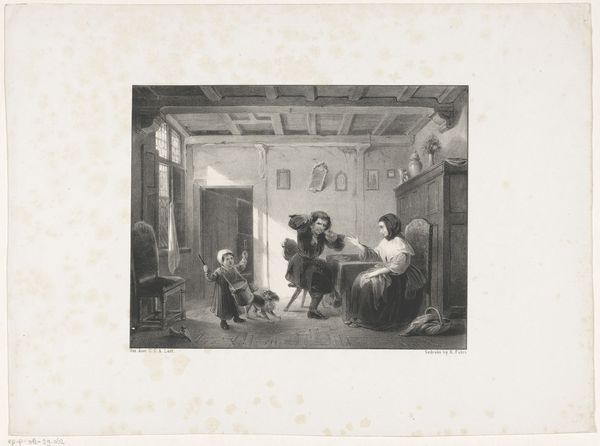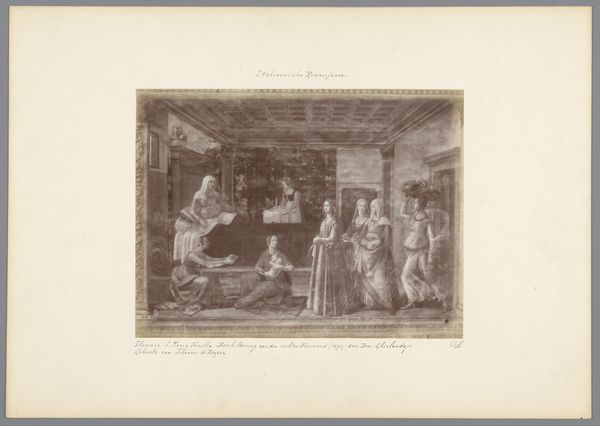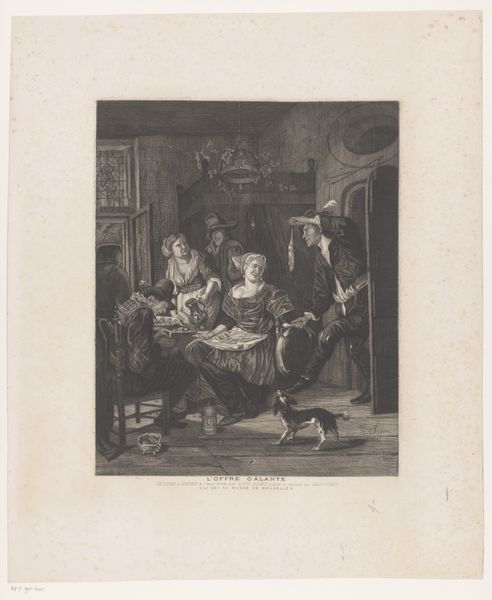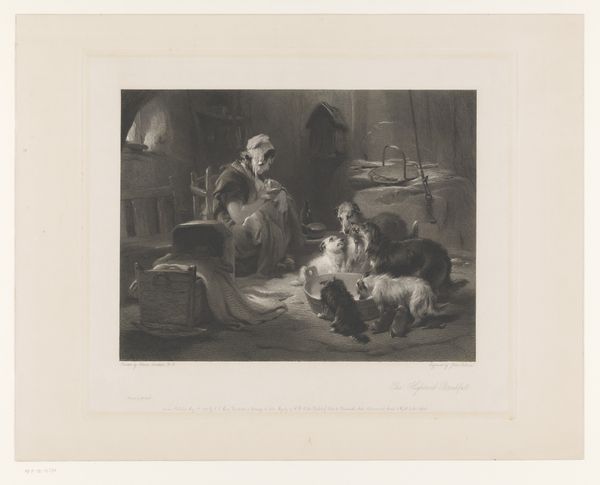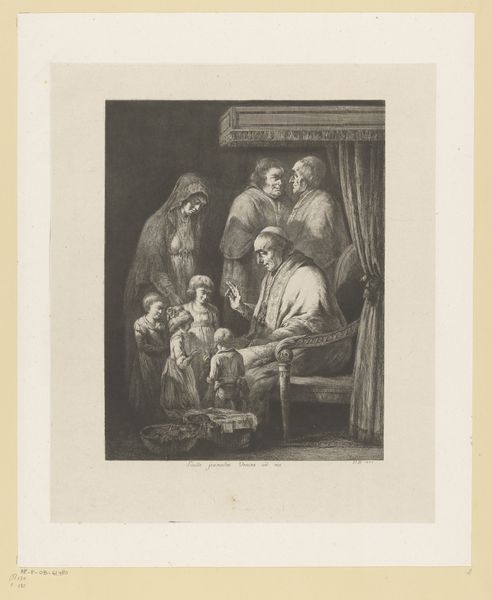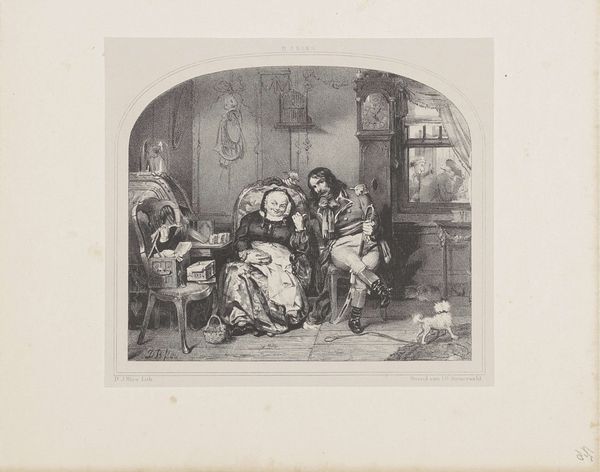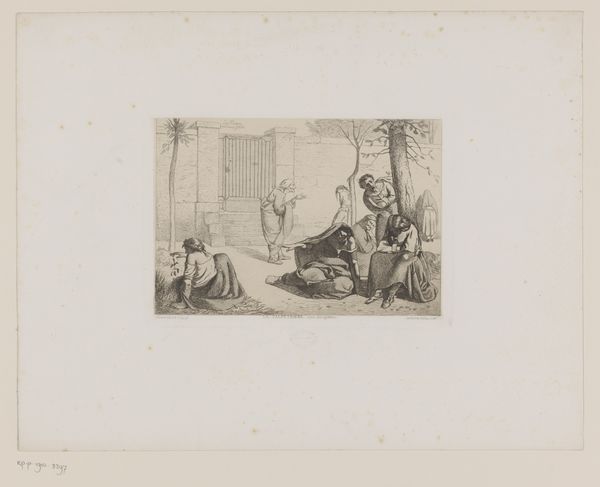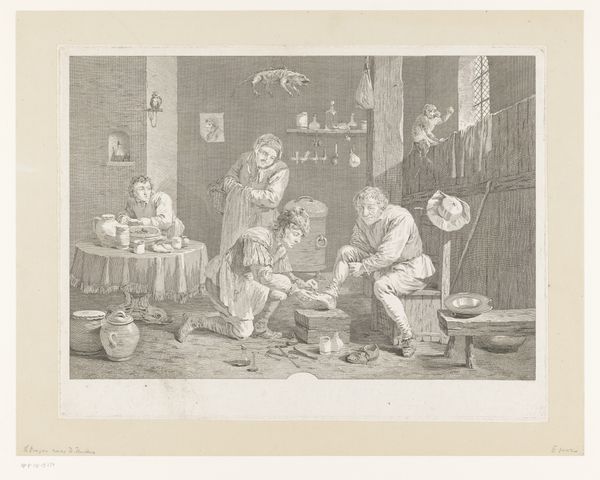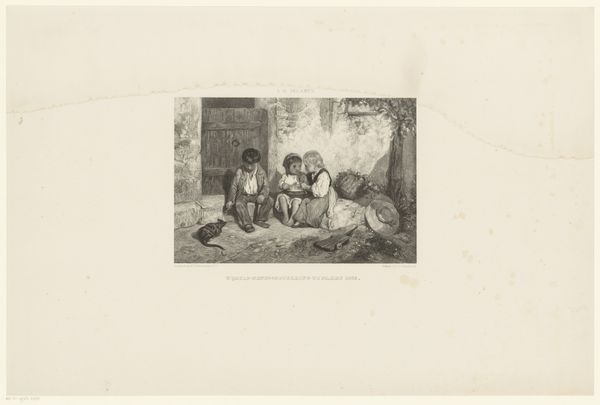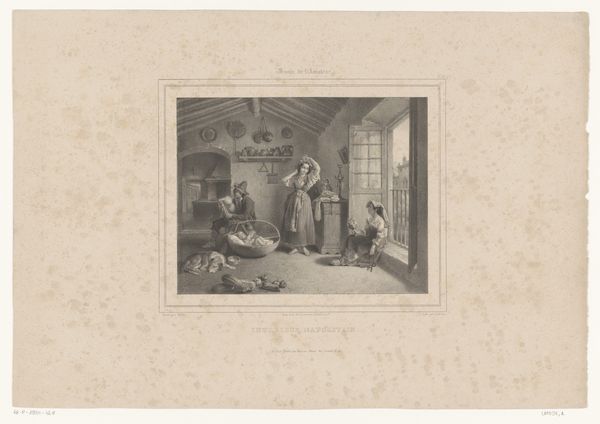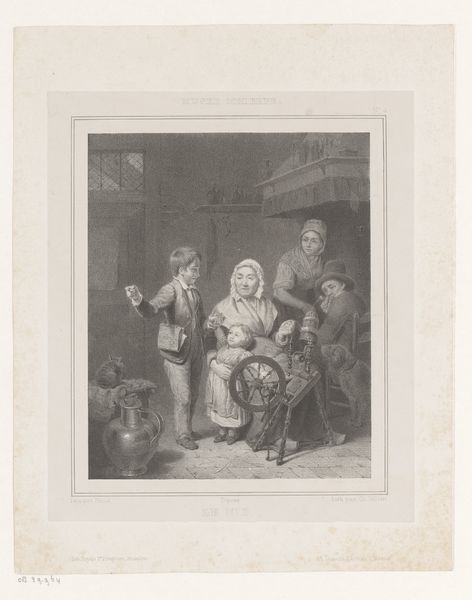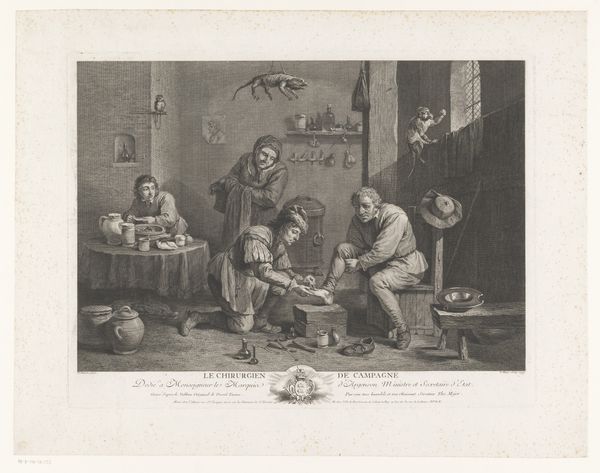
print, engraving
#
narrative-art
# print
#
figuration
#
romanticism
#
genre-painting
#
history-painting
#
engraving
#
realism
Dimensions: height 400 mm, width 507 mm
Copyright: Rijks Museum: Open Domain
Editor: This engraving, "Interior with Mourning Family," created in 1841 by Franciscus Bernardus Waanders, depicts a poignant scene. The heavy use of shading casts a melancholic shadow over the entire composition, making the lone soldier seem both central and isolated. What narrative do you unravel when you look at it? Curator: Narrative is exactly the right word. It reminds me a little of those melodramatic history paintings. Consider the rigid pose of the soldier and the dramatic grief of the family. Look closely at their gestures; how theatrical they are! But unlike history painting, it's got this everyday realism... as if the artist tried to record an ordinary, painful moment. And those scattered papers on the floor... almost like fragments of untold stories. Do you see any symbolism you recognize? Editor: Hmm, not explicitly. Perhaps the soldier leaning against the doorframe suggests a fragile barrier between safety and war? Or am I projecting a bit too much? Curator: No, projection is half the fun! It's a dance, really. We're invited to ponder about absence and presence, about duty and family. It invites introspection; this somber room is also the theatre of our own emotions. Editor: I hadn't thought of it that way. It’s as if Waanders used realism to draw us in and romanticism to heighten the emotion. Curator: Precisely. Perhaps to allow us to see into our own hidden selves. Editor: So, maybe this engraving reflects universal themes of loss and the human condition after all. I’ll never look at a black and white image the same way.
Comments
No comments
Be the first to comment and join the conversation on the ultimate creative platform.
